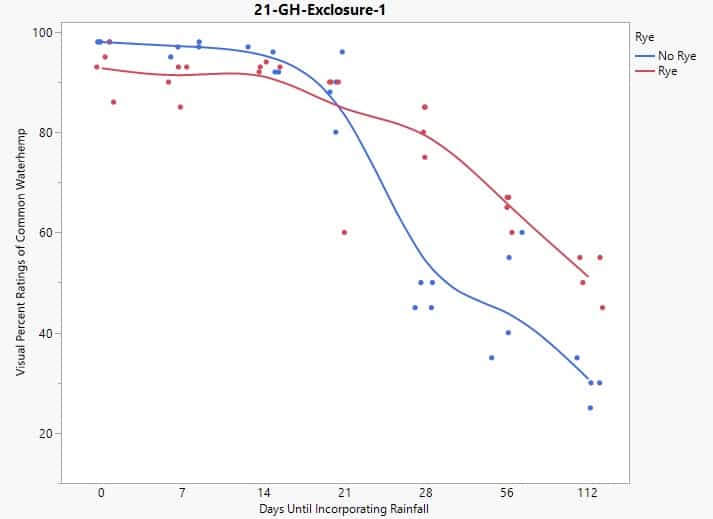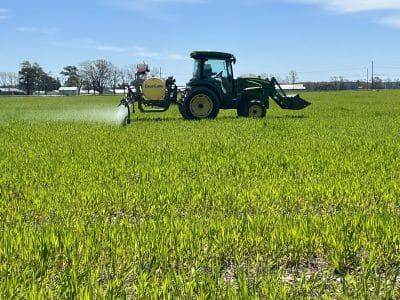We know cover crops can provide a physical barrier on top of the soil to smother and suppress emerging weeds. But many researchers and farmers worry and wonder how that same physical barrier might influence preemergence soil residual herbicides, which must reach the soil to control emerging weeds.
Bradley Decker, a master’s student at Southern Illinois University (SIU), might have the hints of an answer to that complicated question.
Under the direction of SIU weed scientist Dr. Karla Gage, Decker spent the spring and summer of 2021 tending pots of waterhemp, some planted under cereal rye residue and some in bare soil. The pots were sprayed with acetochlor – a group 15 residual herbicide that requires moisture for activation. Decker then doled out the activating rainfall to his pots at different intervals after the herbicide application: 0 days, 7 days, 14 days, 21 days, 28 days, 56 days and 112 days.
For the pots that received rainfall before 21 days had passed, waterhemp control looked pretty good, with the cover crop pots showing slightly weaker control – around 5% more waterhemp escapes – than the bare soil ones.
But when Decker held off on rain beyond the three-week mark, an interesting switch occurred – waterhemp control in the bare soil pots started to drop rapidly, and now the cover crop pots were showing better weed control. By the time some pots were given incorporating rainfall four months following the herbicide application, the cover pots’ waterhemp control was about 20% superior to the bare soil pots.

But why? At first Decker concluded that the cereal rye residue must somehow be slowing the breakdown of acetochlor, allowing it to remain efficacious without rainfall for longer. But after noting that across his experiment, the cover crop pots had fewer waterhemp plants emerging on average, he now has a different theory.
“My current theory for the enhanced control of waterhemp is that it is a direct result of the cereal rye biomass’s potential to reduce waterhemp germination,” he explained.
The results may have important implications for cover crop use. “The climate change prediction scenarios for southern Illinois suggest variable growing seasons with the potential for extended periods of summer drought,” as Decker noted in his study. It would appear that in a rain-scarce scenario where a soil residual herbicide suffers, cover crop residue could be something of a lifeline for weed control.
See more from GROW on how to use cover crops for weed suppression here.
Text by Emily Unglesbee, GROW. Charts and photos from Bradley Decker, SIU.


